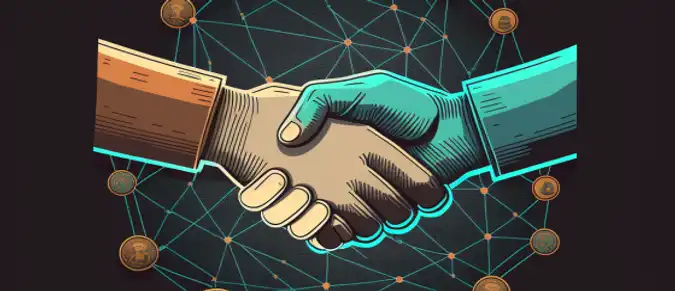A lending protocol is a set of rules and procedures that enable users to lend and borrow digital assets, such as cryptocurrencies, in a decentralized manner. These protocols are typically built on blockchain technology and rely on smart contracts to enforce the terms of the lending and borrowing agreements.
Lending protocols can be used for a variety of purposes, such as earning interest on idle assets or obtaining liquidity for trading or other activities. Users can deposit their digital assets into a lending pool and earn interest on those assets, which is paid out by borrowers who use the assets as collateral for loans. The interest rates are often determined by supply and demand dynamics within the protocol, with rates increasing when demand for borrowing outstrips supply, and decreasing when there is excess supply.
Lending protocols can provide a number of benefits over traditional lending platforms, such as lower fees, faster settlement times, and greater transparency and security. However, they also come with some risks, such as the potential for smart contract bugs or vulnerabilities, and the volatility of digital assets used as collateral.
A lending protocol typically works through a series of steps, as outlined below:
-
Users deposit digital assets into a lending pool: Users can deposit their digital assets into a lending pool, which is controlled by the lending protocol. These assets are used as collateral for loans and earn interest for the user.
-
Borrowers request loans: Borrowers can request loans from the lending pool, using the deposited digital assets as collateral. The amount of the loan is typically a percentage of the value of the collateral.
-
Loan terms are agreed upon: The lending protocol's smart contract automatically enforces the terms of the loan, such as the interest rate and repayment schedule. The borrower must agree to the terms of the loan before it can be approved.
-
Loans are approved: Once the borrower has agreed to the loan terms, the smart contract approves the loan and transfers the funds to the borrower's account.
-
Interest is paid: The borrower must pay interest on the loan, which is distributed to the lenders in the lending pool as earnings.
-
Collateral is liquidated if necessary: If the value of the collateral falls below a certain threshold, the smart contract may automatically liquidate the collateral and distribute the funds to the lenders as repayment for the loan.
-
Loans are repaid: The borrower must repay the loan at the agreed-upon rate and schedule, including interest. Once the loan is fully repaid, the collateral is released back to the borrower.
Lending protocols typically use decentralized finance (DeFi) platforms, such as Ethereum or Binance Smart Chain, and are built on top of smart contracts, which are self-executing programs that automate the lending and borrowing process. This helps ensure that the lending process is transparent, secure, and efficient.



